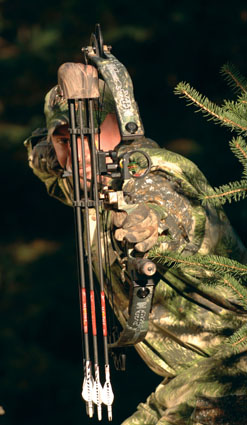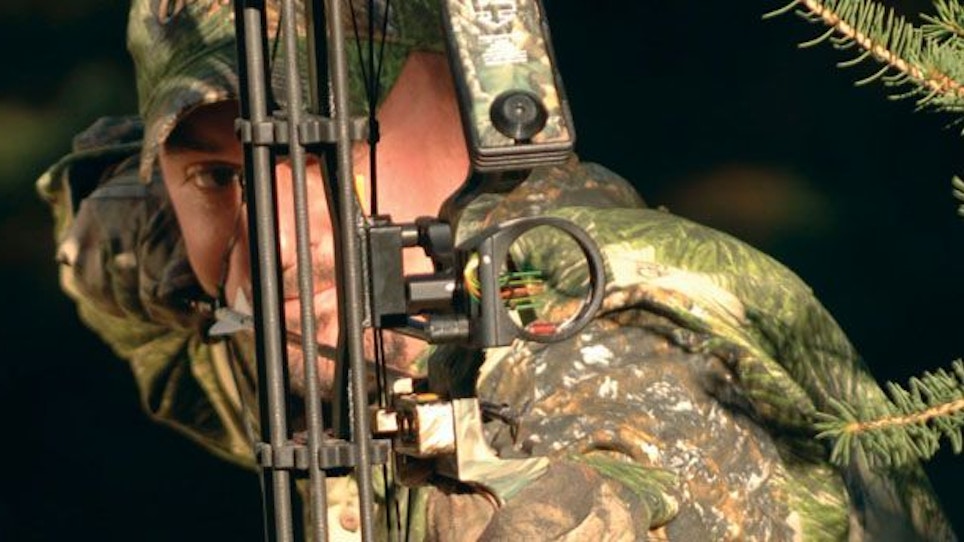 The sight you have bolted to your bow is one of the most important components of your bowhunting outfit.
The sight you have bolted to your bow is one of the most important components of your bowhunting outfit.
Think about it: When the biggest buck you might ever get a shot at appears in front of you, all that’s between you and him is that bow sight. How well you choose and use it can make the difference in nailing him or going home with nothing but an unfilled tag.
I figure I’ve used somewhere around 45 different models of bow sights over the years. Some, even the older models, were fine pieces of engineering. Others were pieces of... well, let’s just say that some bad sights have cost me critters. At least they taught me a lesson or two.
Here are the main considerations you should use when selecting a bow sight.
• Compatibility with your shooting style and other equipment: First, you need a sight that works with your bow. Some sights might not, depending on your bow, your form and other factors. For example, when my son changed his anchor point, he had to switch from the Trophy Ridge sight he was using because the housing came too low and interfered with his arrow. I’ve tried sights that wouldn’t let me mount a bow quiver on certain rigs.
• Visibility: There’s no reason to screw around with a sight system that will let you down in failing light, which is when most shooting situations arise. Use fiber optics with brightness enhanced by thickness or length, a large peep and maybe a sight light. I am leaning more and more toward keeping a light on my sight always, when legal. Remember, you’ll likely need that light if you hunt from an enclosed blind.
• Durability. Take it from a guy who’s had more than one day afield ruined by failed fiber optics — durability is everything. Two designs I like are the Spot-Hogg system, in which a steel wire protects the pins, and sights like the Copper John DeadNuts that have a cover that fits over the pin guard. If you shoot correctly — with both eyes open — you can actually shoot with the cover on!
• User-friendliness: Some sights are easier to set up, adjust and maintain than others. Some seem to have planned obsolescence as their main feature.
• Range: Realistically, 10 years ago, practically no one had any business shooting beyond 40 yards, because you just couldn’t estimate yardage well enough to shoot accurately — a few yards off at 45 would make you miss. Today, with laser rangefinders, faster velocities and other advancements, many people can responsibly shoot much farther than that. And while a person’s limited skills might not make it ethical to take an 80-yard shot at a passing deer, I feel ethics requires that you get accurate at longer ranges for cases when you might be trying to finish a hit animal (I’ve been there). Personally, I want a sight that lets me shoot to 80, and that means seven pins or some moveable system.
• Precision pins: The one exception to my visibility philosophy is when it comes to the precision needed for longer-range shooting. You shoot more precisely with smaller pins, but the .019-inch pins tend to be less visible than the .029-inch pins. Generally, my whitetail, elk and bear rigs have the bigger pins; longer-range setups for the likes of caribou and antelope have smaller pins.
• Accuracy: There are some features that will make you more accurate. One is a sight that extends well in front of the bow, because the longer your sighting plane, the more precision you gain. Another is a round, highlighted pin guard that you center inside your peep, instead of centering each pin. That’s a sighting style that promotes better accuracy, especially at longer ranges, because you’re centering more precisely and not lowering your anchor point as you shoot farther. I won’t use a sight that doesn’t have a level because it helps accuracy so much.
• Features that match your personal style: Little things that you just plain like or prefer can make all the difference. For awhile I wouldn’t shoot anything but a Trophy Ridge sight, because I liked the vertical pin system so much. Some bowhunters will shoot only fixed-pins; others love pendulums (sights for elevated shooting that swing to compensate automatically for yardage) or moveable sights (generally, a single-pin sight that you move to a preset elevation that matches your yardage) or electronic sights like the Summit Hot Dot. Those are the considerations I use when deciding what sight to bolt to my bow.






